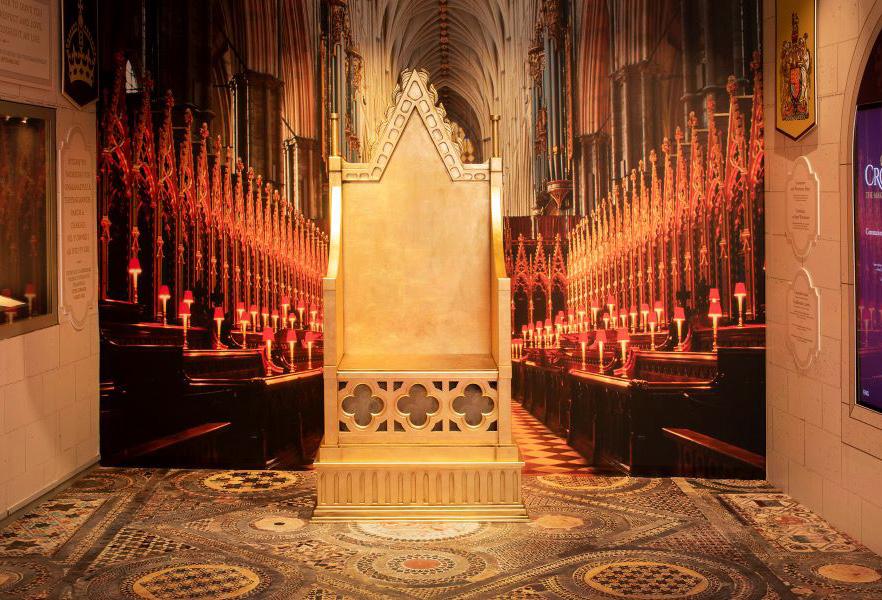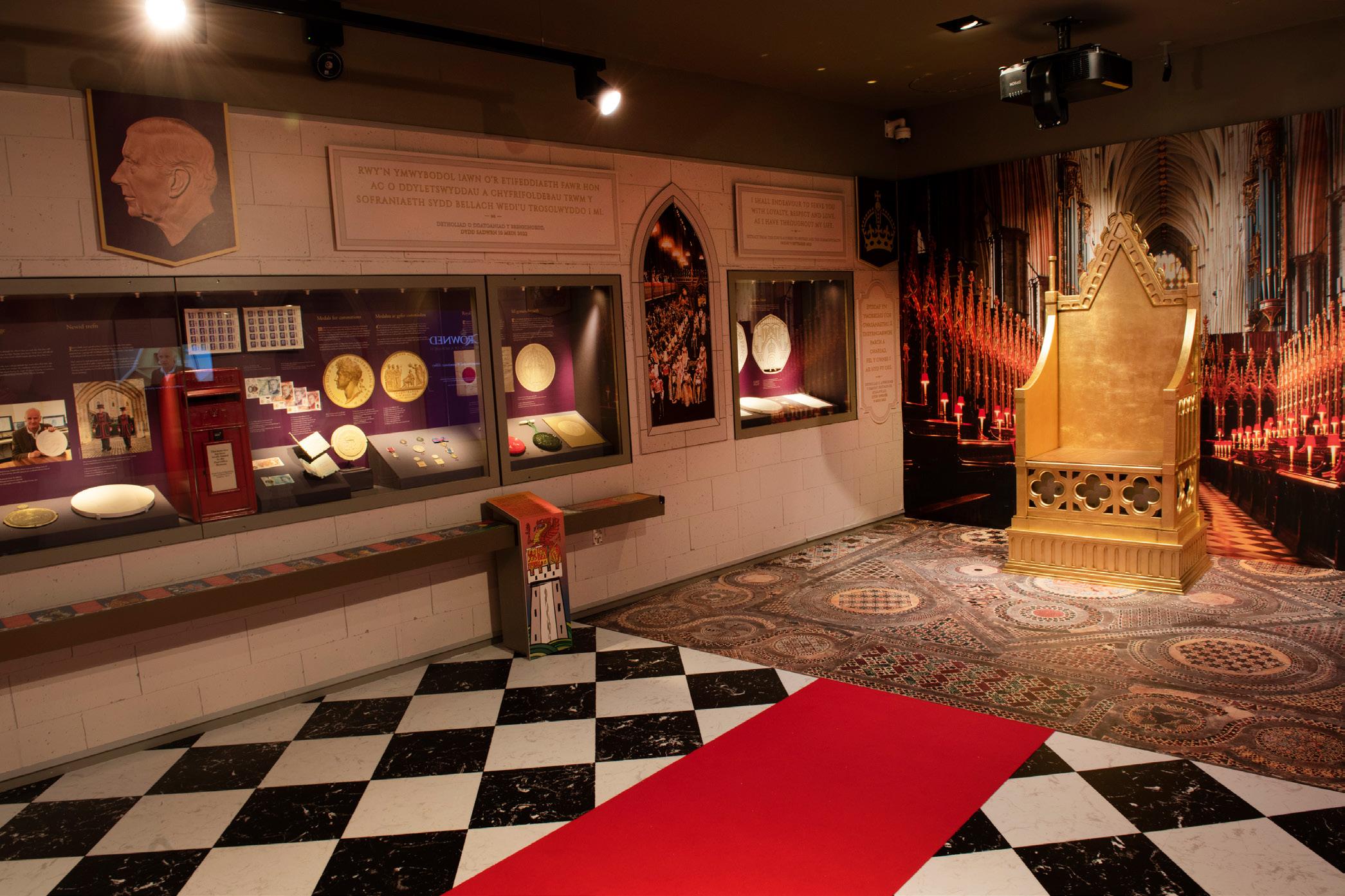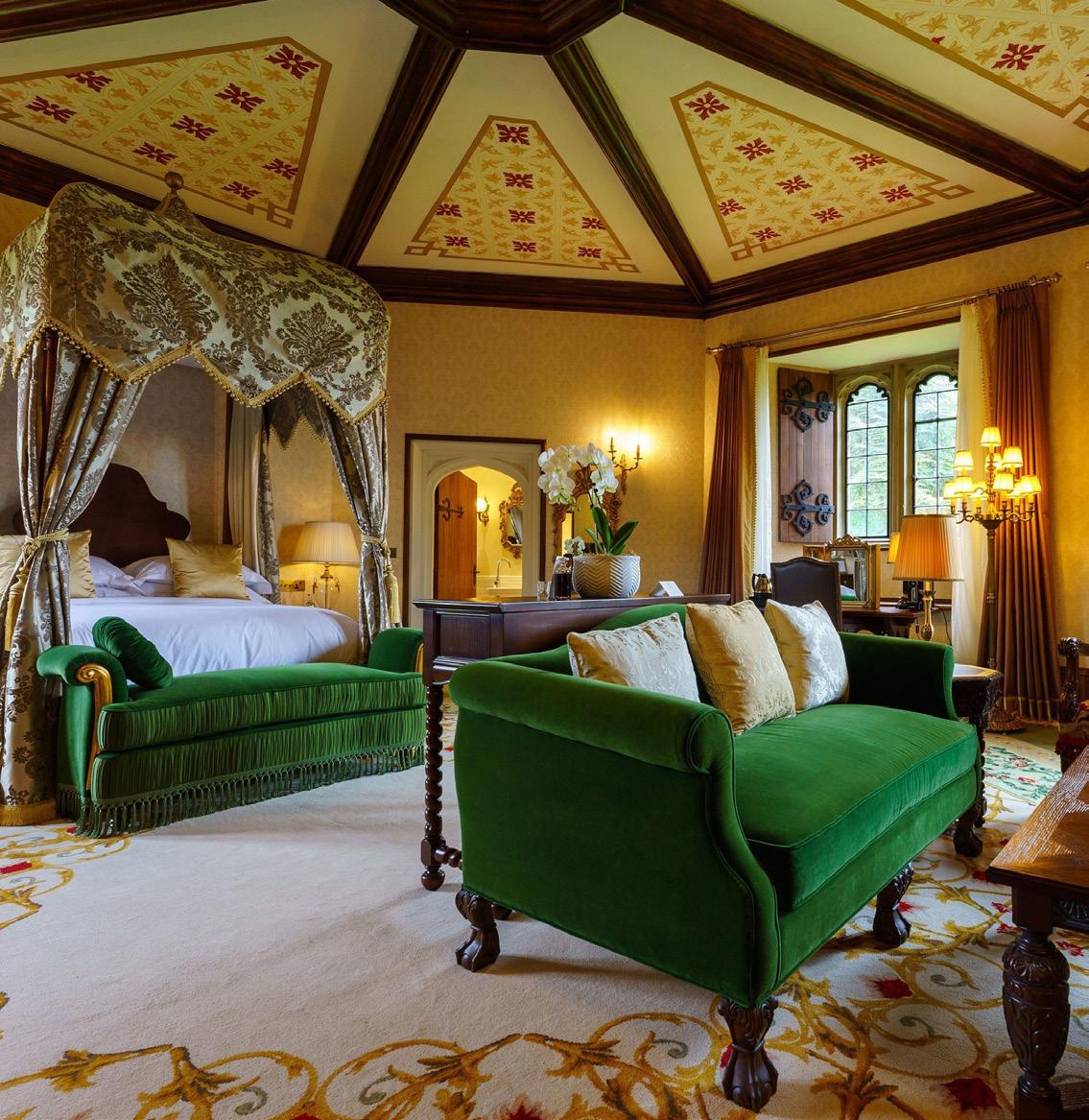
7 minute read
CROWNED THE MAKING OF A MONARCH
Every British coin produced for the last 1100 years started its life at The Royal Mint. It’s just a hop and a skip across the Severn Bridge from the Great West Way and a fascinating place to see in action.
The very first coins were made – or minted – in Britain around the end of the 2nd century BC. An official Royal Mint was established at the Tower of London many years later, at the end of the 3rd century. The move to its current bigger, more modern site in Llantrisant, near Cardiff, was at the end of the 1960s, and partly prompted by the move to decimalisation.
Not surprisingly, with the amount of cash (not to mention gold bullion and some of the world’s rarest coins) kept here, there are strong security measures in place at the 35-acre site near Cardiff. What is surprising is that the public are welcomed in to have a look round.
We spoke to Matthew Rose, who has spent years letting people into the secrets of one of the world’s oldest companies at The Royal Mint Experience. ‘Many people come here not knowing what to expect, he says, but they go away with a real appreciation of the skills and crafts that go into making every coin. We spend without thinking but these are like miniature works of art and have so much history behind them.’
In fact, The Royal Mint makes money for the UK and some 60 other countries around the world. As well as the everyday stuff we spend, there are commemorative coins to mark special events, anniversaries and deserving individuals.

And it’s not just coins either. There are medals that visitors can see, from those worn by members of the armed forces to those won at the 2012 Olympic Games medals, and seals, including the including the Great Seal of the Realm, belonging to the Monarch, and used on important state papers.
‘We talk about the history of this place on a tour here’, says Matthew. ‘And we show it, too. We make it as interactive as possible. It’s not a museum but a working factory. During the week, visitors can see it in action, watching the processes from behind a glass screen. Children love anything shiny – and once they get into the building, which is itself big and gold, they get to see glimmering coins shooting off the ‘hoppers’ and being tipped into presses. Many of them go away from here feeling inspired and start collecting coins as a hobby.’ (there are details of some of the most rare and collectable coins on The Royal Mint website).
At weekends, when the factory is closed, guests can go behind the screen and walk the factory floor, seeing the machinery up close. It’s a different experience – many people come back twice to see both.’
The Coronation – and its aftermath – have been a particularly exciting time here. ‘On the night before the Coronation itself’, says Matthew, ‘we opened up for 24 hours, with tours every 20 minutes. We streamed the ceremony onto big screens so that guests could go on the tour then watch the Coronation in this iconic place.

‘Since then we have had the pleasure of producing the new coins which feature the portrait of King Charles III (as well as Queen Elizabeth II on the reverse side), which will gradually replace all older coins.’ Once upon a time, before the days of television and newspapers, these portraits whre the only way that most people would ever get to see their monarch. Since the 17th century the tradition has been for each monarch faces the opposite way to that of their predecessor.
A new temporarary exhibition, built to celebrate the Coronation, features a coin from every monarch from William and Conqueror to King Charles III. A mock-up of Wetminster Abbey, includes a throne on which visitors can sit for a photo – a lovely take away from a visit.

Another great souvenir is a coin that you have struck yourself. Designs vary throughout the year. As we go to press, for example, a commemorative coin celebrating Lord of the Rings and The Hobbit author JRR Tolkien is being offered.
So, what can we look forward to this Autumn and Winter at The Royal Mint? There are regular events and workshops, particularly over the school holidays, such as the Creepy Critters Halloween workshops, which aim to teach children about the benefits of bugs in our environment.
Probably the highlight of the year, however, is The Royal Mint Christmas Experience. ‘It’s magical’, says Matthew. ‘Everything is covered in snow – we bring in a special effects company to do it - plus there are 25 foot high Christmas trees and lights twinkling all around. Our usual tour becomes entirely Christmas themed, with the factory floor transformed into Santa’s grotto. The tour starts in the gingerbread room and moves through the sorting office (where children can post their wish lists). Children then get to meet Santa and learn about the what the elves do. They also learn about the tradition of using coins at Christmas – children receiving them in their stockings and parents putting a sixpence in the Christmas pudding. A present from Santa ensures every child goes home with a smile on their face.’
It seems that any time is a good time to visit The Royal Mint. And, while you’re waiting, look a bit more closely at that handful of coins you receive. You never know what they might be worth!.
Regally good experiences on the Great West Way...
There are plenty of royal hotspots along the Great West Way route. Here are some of our favourites…
▶ King Charles III Coronation Walking Tour, London
Get the inside gen on the Coronation and all things royal. The two-hour walk includes all the usual suspects (like Buckingham Palace and St James’), along with lesser-known delights, like the Queen’s favourite off licence and Prince Phillip’s barbers. goldentours.com
▶ Windsor Castle, Berkshire
It’s been home (and occasional wedding venue) to British Kings and Queens for over 900 years. When you’ve seen it, try the new Coronation beer and take a tour of the Windsor & Eton brewery where it’s made. webrew.co.uk
▶ Great Royal Gardens Afternoon Tea, Berkshire
Cliveden, which has entertained every monarch since King George I, is celebrating Coronation year with a special afternoon tea. It includes produce from the Sandringham Estate and sweet treats inspired by flowers grown in the King’s royal gardens. clivedenhouse.co.uk
▶ Highgrove House & Gardens, Gloucestershire
The former home, and still a favourite retreat, of King Charles III, is not open to the public. However, the 15 acres of organic gardens, including rare trees and plants, designed by him are. highgrovegardens.com
▶ The Polly tea Rooms, Wiltshire
Stop for a cup of tea and slice of cake where the Princess of Wales used to do the same with friends, while studying at nearby Marlborough College. thepollytearooms.com
▶ Victoria Art Gallery, Bath
Ogle art at this gallery, which opened in 1900 in celebration of Queen Victoria’s Diamond Jubilee. Exhibitions regularly change and feature artists and designers both well-known and up and coming. victoriagal.org.uk
▶ Thornbury Castle, near Bristol

Have a sleepover in Thornbury Castle's Henry VIII Suite, where the king and his wife, Anne Boleyn stayed for 10 days in 1535. thornburycastle.co.uk
Click here to find out more about the museums on the Great West Way









